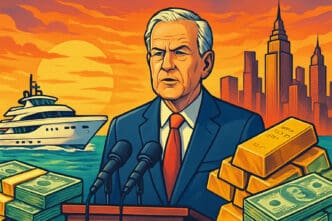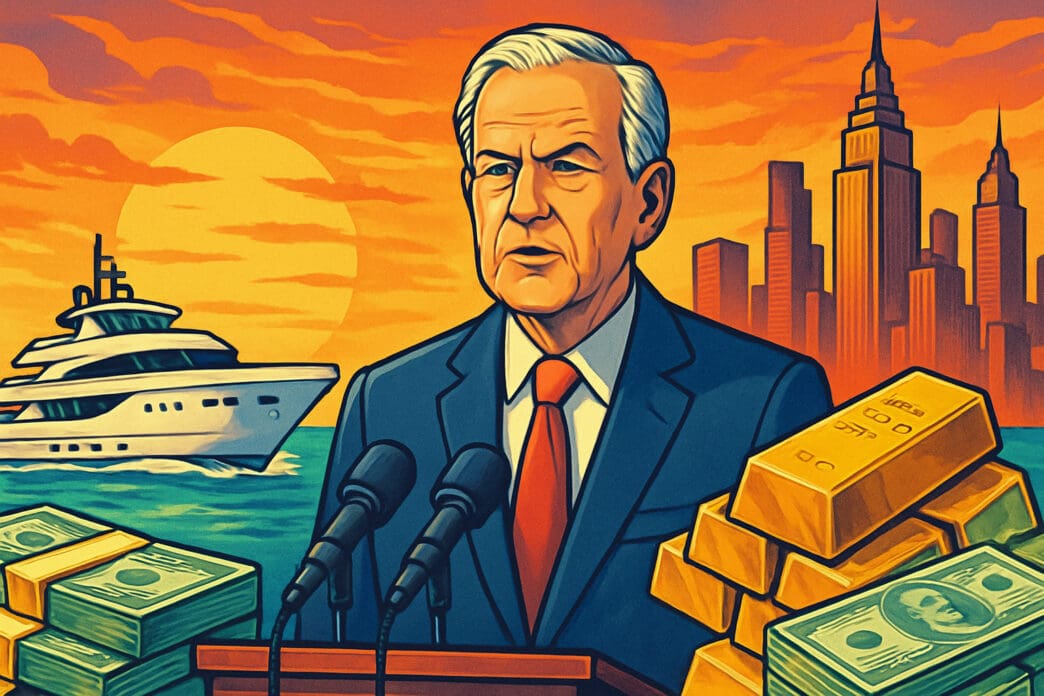Bernard Arnault, the French luxury titan, has masterfully assembled the LVMH Moët Hennessy Louis Vuitton conglomerate over four decades, leveraging audacious acquisitions and a relentless focus on brand heritage to become one of the richest in the world. His empire, spanning from fashion and leather goods to wines and spirits, is a testament to his strategic vision and often ruthless business acumen, fundamentally reshaping the global luxury market. He transformed a fragmented industry of family-owned houses into a disciplined, corporate powerhouse, setting a new standard for how desire is manufactured and sold on a global scale.
The Early Years: From Construction to Christian Dior
Bernard Arnault’s journey did not begin amidst the silks and scents of Parisian high fashion. His professional life started in his family’s construction company, Ferret-Savinel, in northern France. It was there, in the world of concrete and contracts, that he honed the financial discipline and project management skills that would later define his empire-building. A move to the United States in the early 1980s broadened his perspective. While working in real estate development, he absorbed the aggressive, shareholder-focused tactics of American capitalism. This experience instilled in him a different way of thinking about business, one that was less sentimental and more focused on undervalued assets and swift execution.
The Pivotal Acquisition: Boussac Saint-Frères
The turning point came in 1984. Arnault, back in France, identified a golden opportunity within the wreckage of a bankrupt textile group, Boussac Saint-Frères. While the conglomerate was failing, it held a “sleeping beauty” in its portfolio: the legendary fashion house of Christian Dior. Arnault put up $15 million of his family’s money and leveraged the rest to acquire the entire group for a symbolic one franc, convincing the French government he would preserve jobs and revive the business. However, his true prize was always Dior. In a move that shocked the cozy French business establishment, he systematically sold off most of Boussac’s other assets, including its industrial textile operations. He kept only Christian Dior and the prestigious Parisian department store, Le Bon Marché. This calculated and clinical maneuver earned him the moniker “The Wolf in the Cashmere Coat.” It was a clear signal of his intent: to prioritize high-value, high-potential brands over sentimental attachments to legacy industrial assets. Dior would become the cornerstone upon which he would build everything else.
The Birth of a Titan: The LVMH Takeover
By the late 1980s, the newly formed LVMH—a 1987 merger between fashion trunk-maker Louis Vuitton and spirits giant Moët Hennessy—was plagued by internal conflict. The heads of the founding families, Henry Racamier of Vuitton and Alain Chevalier of Moët Hennessy, were locked in a bitter power struggle over the group’s direction.
Arnault’s Strategic Entry
Seeing an opportunity in the chaos, Arnault was invited by management to invest in the company as a stabilizing force. He accepted the invitation but had far grander ambitions. He saw that the combined entity, rich with iconic brands but hobbled by infighting, was profoundly undervalued and vulnerable. Working behind the scenes, he formed a strategic alliance with Guinness, a major LVMH shareholder, and began aggressively buying up LVMH shares on the open market. He skillfully exploited the discord between Racamier and Chevalier, positioning himself as an ally to both sides while quietly building a controlling stake.
The Corporate Raider
Within two years, by 1989, Arnault had become the group’s largest shareholder. He launched a full-blown hostile takeover, ultimately ousting the founding families from their leadership roles. This American-style corporate raid was a brutal and unprecedented event in France, cementing Arnault’s reputation as a formidable and relentless dealmaker. With control secured, he installed himself as chairman and CEO. He then folded his prized asset, Christian Dior, into the group’s structure, creating a powerful synergy that placed high fashion at the very center of his burgeoning luxury empire.
The Arnault Method: A Blueprint for Luxury Domination
Arnault’s success is not simply a story of acquisitions; it is built on a specific and repeatable management philosophy that balances creativity with corporate might. This method has become the blueprint for the entire modern luxury sector.
The “House of Brands” Strategy
The core of the LVMH model is to operate as a “house of brands” rather than a single monolithic entity. Arnault acquires companies with rich histories and powerful brand DNA—from Fendi and Celine to Bulgari and TAG Heuer. He then provides them with the centralized resources of a global behemoth: capital for expansion, negotiating power for prime real estate, and shared back-office functions. Crucially, however, he insists on a decentralized organizational structure. Each brand, or “maison,” is run as a quasi-independent business, preserving its unique culture, heritage, and creative direction. This allows a historic brand like Loewe to feel artisanal and distinct, even while benefiting from the scale of a $400 billion corporation.
Investing in Creative Genius
Arnault understands that in luxury, creativity is the ultimate currency. He has a long and proven history of identifying and empowering visionary designers, often taking calculated risks on bold, and sometimes controversial, talent. He famously hired John Galliano to revitalize Dior and Marc Jacobs to transform Louis Vuitton from a luggage company into a global fashion powerhouse. More recently, his appointments of Phoebe Philo at Celine, who created a cult of minimalist chic, and Virgil Abloh and Pharrell Williams at Louis Vuitton Men’s, who fused luxury with streetwear, demonstrate his ongoing commitment to keeping brands culturally relevant. He gives these creators immense freedom but holds them accountable for commercial results—a delicate but effective balance of art and commerce.
Controlling the Narrative and the Real Estate
A key pillar of the Arnault method is controlling distribution. LVMH invests billions in its own network of flagship stores in the world’s most prestigious shopping districts. This direct-to-consumer model allows the group to manage the customer experience from start to finish, maintain strict control over pricing, and avoid the brand dilution that can occur through third-party retailers. These stores are more than just points of sale; they are temples of the brand, designed by star architects and serving as powerful marketing tools. By controlling the environment where products are sold, LVMH controls the narrative and reinforces the perception of exclusivity and desire.
Key Acquisitions and Battles
Arnault’s path to the top was marked by both spectacular wins and notable defeats, which are just as instructive. His attempts to acquire his biggest rivals shaped the competitive landscape that exists today.
The “Handbag Wars”: Gucci
In 1999, Arnault set his sights on Gucci Group, stealthily building up a stake in what he hoped would be another major addition to his stable. However, Gucci’s CEO Domenico De Sole and its star designer Tom Ford mounted a ferocious defense. They famously decried Arnault’s move as a hostile attack by a “corporate bully.” In a brilliant defensive maneuver, De Sole found a “white knight” investor in another French billionaire, François Pinault, founder of the retail group PPR (now Kering). Pinault acquired a controlling stake in Gucci, thwarting Arnault’s ambitions. The battle was a rare public defeat for Arnault and created his most formidable rival, as Kering went on to build its own luxury empire around Gucci, Saint Laurent, and Balenciaga.
The Hermès Ambush
A decade later, Arnault tried another audacious move on Hermès, the fiercely independent, family-controlled maker of the iconic Birkin bag. Using complex and opaque financial derivatives known as equity swaps, LVMH secretly amassed a 17% stake in its rival, only revealing the position once it crossed a disclosure threshold. The move blindsided and infuriated the Hermès founding family, who publicly condemned it as a hostile “attack.” The family unified against him, pooling their shares and fighting a protracted legal and public relations battle. Ultimately, French regulators intervened, and Arnault was forced to unwind his position. The failed bid further solidified his reputation as a predator but also demonstrated the limits of his power against a unified and determined family ownership structure.
The Crown Jewel: Tiffany & Co.
Arnault’s largest and most successful acquisition came in 2021 with the purchase of American jeweler Tiffany & Co. for nearly $16 billion. The deal gave LVMH a dominant position in “hard luxury”—jewelry and watches—a key growth market. The takeover was nearly derailed by the COVID-19 pandemic, as Arnault sought to renegotiate the price, but after tense legal wrangling, the deal closed, marking a major strategic victory.
Succession and the Future of the Empire
Now in his seventies, Arnault is carefully orchestrating the future of his empire, with a clear focus on family continuity. All five of his children hold senior executive positions across LVMH’s top brands, including Dior, Tiffany & Co., TAG Heuer, and Louis Vuitton. This is a deliberate and long-term strategy to train the next generation and ensure the family retains control. In 2022, he restructured the family’s holding company, Agache, to give his children equal stakes while cementing his own control for the foreseeable future. He also successfully pushed to raise the age limit for LVMH’s chairman and CEO to 80, giving him more time at the helm. The ultimate question of which child, if any, will succeed him as the singular leader remains the subject of intense speculation. Bernard Arnault’s legacy is etched in the very fabric of the modern luxury industry. Through a potent combination of long-term vision, an appreciation for creative genius, and an unflinching willingness to engage in corporate warfare, he transformed a collection of legacy brands into the world’s most valuable and influential luxury goods company. His story is a masterclass in how to build an empire by selling not just products, but dreams.








